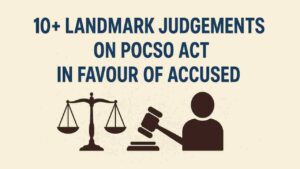The supervisory functions of RBI refer to the Reserve Bank of India’s regulatory duties to oversee and ensure the stability of India’s financial system. These include licensing banks, conducting inspections, enforcing prudential norms, monitoring NBFCs, supervising payment systems, managing cybersecurity, and protecting consumer interests.
Last Updated: May, 2025
The Reserve Bank of India (RBI), established under the RBI Act of 1934, has evolved over the decades from a monetary authority into an institution with wide-ranging supervisory responsibilities.
Beyond its well-known roles as the issuer of currency and manager of monetary policy, the RBI undertakes a myriad of supervisory functions designed to safeguard the country’s banking system, protect consumer interests, and promote financial stability.
Expert Insight: The RBI’s supervisory framework is not only a statutory requirement under multiple acts like the Banking Regulation Act, 1949 and the RBI Act, 1934, but it also reflects the institution’s commitment to transparency, robust risk management, and continuous modernization in the face of evolving financial challenges. This article leverages authoritative sources and practical examples to view these functions comprehensively.
Introduction
The Reserve Bank of India (RBI) does much more than regulate currency and control inflation. Its supervisory functions are critical in ensuring the stability, transparency, and efficiency of India’s financial system.
Established on April 1, 1935, the RBI’s mandate was initially focused on issuing banknotes and maintaining monetary stability. However, with the rapid evolution of the financial sector, the scope of the RBI’s responsibilities has expanded considerably.
Today, the bank plays a crucial role in supervising not only scheduled commercial banks but also non-banking financial institutions (NBFIs), payment system operators, and various other financial intermediaries.
What are the Supervisory Functions of RBI?
Supervisory functions of RBI refer to the regulatory duties the Reserve Bank of India undertakes to monitor, guide, and stabilize the financial system through licensing, inspections, risk-based assessments, and governance controls.
The supervisory functions of the RBI are fundamental to:
- Ensuring the safety and soundness of financial institutions.
- Preventing and mitigating systemic risks.
- Enhancing public confidence in the banking system.
- Protecting consumer interests.
Key Functions Include:
- Licensing banks & NBFCs
- On-site inspections
- Risk-based supervision
- Asset quality reviews
- Cybersecurity regulation
“The best way to destroy the capitalist system is to debauch the currency.” – Vladimir Lenin
What Is the Strategic Role of Supervisory Functions?
A. Importance of Supervision
Supervision is at the heart of the RBI’s efforts to foster a resilient and robust banking system. It ensures that banks and financial institutions operate prudently, comply with regulatory norms, and maintain adequate risk management practices.
In doing so, the RBI helps prevent financial crises and fosters an environment where economic growth can be sustained without compromising stability.
B. The EEAT Framework in Practice
The RBI’s supervisory role epitomizes the principles of EEAT—Expertise, Experience, Authoritativeness, and Trustworthiness.
Its guidelines are based on years of empirical experience, informed by global best practices and tailored to India’s unique economic context.
The regulatory framework is continuously updated to address emerging challenges such as digital fraud, cybersecurity risks, and the complexities introduced by fintech innovations.
“India’s banking sector supervises over ₹200 trillion in assets, making the RBI’s oversight one of the most complex in the world.”
15+ Supervisory Functions of the RBI

Below are some main supervisory functions carried out by the RBI, each of which plays a critical role in maintaining financial stability and protecting stakeholder interests.
#1 Licensing and Authorization of Banks and Financial Institutions
The RBI is responsible for granting licenses to banks and other financial entities wishing to operate in India.
This process involves a rigorous assessment of the applicant’s financial health, business plan, management capability, and overall viability.
By ensuring that only institutions that meet stringent criteria are allowed to operate, the RBI lays the foundation for a sound and trustworthy banking sector.
- Application Evaluation: Prospective banks undergo thorough scrutiny before being granted a license. This includes evaluating capital adequacy, risk management practices, and corporate governance standards.
- Conditional Approvals: In some cases, licenses may be granted with specific conditions that the institution must fulfill within a stipulated timeframe.
- Ongoing Authorization: Even after licensing, banks are subject to continuous evaluation to ensure they adhere to regulatory requirements.
This function is critical because it ensures that only institutions capable of managing risks prudently are allowed to participate in the financial system.
#2 On-Site Inspections
On-site inspections are a cornerstone of the RBI’s supervisory framework. These inspections involve physical visits to banks and financial institutions to assess their operations, internal controls, asset quality, and adherence to regulatory norms.
- Annual Financial Inspections (AFI): Typically conducted once a year, these inspections are based on the CAMELS (Capital adequacy, Asset quality, Management, Earnings, Liquidity, and Sensitivity to market risk) model, which has been adapted to suit Indian banking conditions (often referred to as CAMELS+ for additional parameters).
- Targeted Inspections: Banks that show signs of stress or have reported irregularities may be subjected to more frequent or in-depth inspections.
- Follow-Up Actions: Any issues identified during inspections lead to supervisory discussions, corrective action plans, and, in some cases, sanctions.
The on-site inspection mechanism reinforces the RBI’s commitment to proactive risk management and helps in the early identification of potential problems.
#3 Off-Site Surveillance and Monitoring
In addition to on-site inspections, the RBI employs off-site surveillance to continuously monitor banks’ performance between physical visits. This includes analysis of periodic returns and reports submitted by financial institutions.
- Data Collection: Banks are required to submit regular reports on their financial performance, asset quality, liquidity positions, and other key metrics.
- Risk Identification: Using advanced data analytics, the RBI assesses trends that may indicate deteriorating financial health or emerging risks.
- Early Intervention: Off-site monitoring enables the RBI to flag potential issues early, allowing for timely remedial action before problems escalate.
#4 Risk-Based Supervision and Assessment
The RBI has adopted a risk-based supervision (RBS) approach, which tailors the intensity of oversight to the risk profile of individual banks.
Under this approach, institutions with higher risk profiles receive more focused and frequent supervision.
- Risk Profiling: Banks are evaluated on several risk dimensions, including credit risk, market risk, operational risk, and liquidity risk.
- Tailored Supervision: High-risk institutions are subjected to more intensive monitoring, including additional reporting requirements and more frequent inspections.
- Resource Allocation: The RBS approach allows the RBI to allocate its supervisory resources more efficiently, focusing on areas that require greater oversight.
“Supervision is not about avoiding all failures, but about preventing systemic collapse.” – Ben Bernanke
#5 Supervisory Rating and Classification of Banks
RBI uses a supervisory rating system to classify banks based on their financial health and compliance with regulatory standards. This system is akin to the internationally recognized CAMELS rating system.
- Rating Scale: Banks are rated on a scale that reflects their overall performance in key areas such as capital adequacy, asset quality, management quality, earnings stability, and liquidity.
- Impact on Operations: A lower rating may trigger stricter supervision, restrictions on operations, or mandates for corrective measures.
- Transparency: Supervisory ratings are communicated to bank management to foster a culture of self-improvement and accountability.
By classifying banks based on performance, the RBI creates incentives for banks to improve risk management practices and ensure sound operational practices.
#6 Corporate Governance Oversight
The RBI places significant emphasis on corporate governance in banks. It issues guidelines and directives to ensure that banks maintain robust governance structures, transparent reporting mechanisms, and effective internal controls.
- Board Composition: The RBI recommends best practices for the composition of the board of directors, including the inclusion of independent directors.
- Internal Controls: Banks are expected to maintain strong internal audit functions and risk management frameworks.
- Regulatory Guidelines: Through circulars and directives, the RBI mandates periodic reviews and updates of governance practices, ensuring that they remain in line with global standards.
Enhanced corporate governance not only strengthens the internal framework of banks but also bolsters investor and consumer confidence in the financial system.
#7 Consumer Protection and Grievance Redressal
One of the key mandates of the RBI’s supervisory role is the protection of consumers. The RBI has instituted mechanisms such as the Banking Ombudsman Scheme to resolve complaints and disputes between banks and their customers.
- Ombudsman Scheme: This scheme provides a fast-track and cost-effective redressal mechanism for customer grievances.
- Guidelines on Fair Practices: The RBI issues directives ensuring that banks maintain transparency in pricing, fees, and service delivery.
- Monitoring Compliance: Regular audits and inspections include evaluations of how banks address consumer complaints and adhere to fair practice norms.
By ensuring robust consumer protection, the RBI helps to build and maintain public trust in the banking system.
#8 Supervision of Non-Banking Financial Companies (NBFCs)
The RBI’s supervisory ambit extends to non-banking financial companies (NBFCs), which have grown significantly in recent years. The RBI monitors NBFCs to ensure they adhere to prudential norms and do not pose systemic risks.
- Licensing and Registration: Similar to banks, NBFCs must meet certain criteria and obtain RBI approval before commencing operations.
- Regular Monitoring: NBFCs are subject to both on-site inspections and off-site surveillance. Their capital adequacy, asset quality, and liquidity positions are closely monitored.
- Targeted Directives: In response to market conditions, the RBI has occasionally issued specific directives to curb imprudent practices among NBFCs, such as aggressive lending or high interest rates.
Given their growing importance in credit delivery, effective supervision of NBFCs is crucial for overall financial stability.
“Post the 2008 global financial crisis, India’s banking system remained stable, largely due to the RBI’s strict supervisory framework.”
#9 Supervision of Payment and Settlement Systems
With the rapid digitalization of financial transactions, the RBI’s supervisory role now includes oversight of the country’s payment and settlement systems.
The Payment and Settlement Systems Act, 2007, empowers the RBI to regulate these systems to ensure security, efficiency, and reliability.
- Electronic Payment Systems: The RBI supervises systems like NEFT, RTGS, and the Unified Payments Interface (UPI), ensuring that they operate without disruption and maintain high security standards.
- Systemic Risk Mitigation: By monitoring the integrity of the payment infrastructure, the RBI minimizes systemic risks that could arise from technical glitches or cyberattacks.
- Innovation and Regulation: The RBI actively promotes innovation in digital payments while ensuring that new systems comply with stringent regulatory standards.
#10 Enforcement of Prudential Norms and Capital Adequacy Standards
The RBI enforces prudential norms—such as the Cash Reserve Ratio (CRR), Statutory Liquidity Ratio (SLR), and capital adequacy norms—to ensure that banks operate safely and have sufficient buffers against losses.
- Capital Requirements: Banks must maintain minimum capital ratios to absorb unexpected losses, which are periodically reviewed by the RBI.
- Liquidity Norms: CRR and SLR are used to ensure that banks have adequate liquid assets. Deviations from these norms trigger corrective supervisory actions.
- Regular Reporting: Banks are required to submit detailed reports on their compliance with these norms, which the RBI analyzes as part of its off-site surveillance.
#11 Monitoring Asset Quality and Non-Performing Assets (NPAs)
Monitoring the quality of assets is a critical supervisory function. The RBI closely tracks the level of non-performing assets (NPAs) in banks to assess financial health and to take preemptive action when necessary.
- Regular Reviews: Through both on-site inspections and off-site monitoring, the RBI evaluates the quality of banks’ loan portfolios.
- Early Warning Signals: The identification of rising NPAs serves as a warning signal, prompting early intervention measures.
- Corrective Measures: In cases of deteriorating asset quality, the RBI may require banks to increase provisions, restructure loans, or, in extreme cases, take steps toward remediation or resolution.
Important Fact: The RBI monitors more than 10,000 banks and financial institutions, ensuring compliance with stringent regulatory norms.
#12 Cybersecurity and IT Risk Management
With the increasing reliance on digital technologies, cybersecurity has become a paramount concern for the RBI.
The central bank regularly issues guidelines and directives to ensure that banks have robust IT systems and cybersecurity measures in place.
- Risk Assessment: The RBI conducts periodic reviews of banks’ cybersecurity frameworks to identify vulnerabilities and gaps.
- Guidelines and Best Practices: Through circulars and directives, the RBI mandates that banks implement best practices in cybersecurity, including data encryption, multi-factor authentication, and robust disaster recovery plans.
- Third-Party Oversight: The RBI also scrutinizes the cybersecurity protocols of third-party service providers, ensuring that banks’ IT ecosystems are secure end-to-end.
- Incident Response: In the event of a cybersecurity breach or digital fraud, the RBI coordinates with banks to manage the incident, minimize damage, and restore trust.
#13 Supervisory Actions and Corrective Measures
When banks or financial institutions deviate from regulatory norms, the RBI is empowered to take corrective actions.
These supervisory actions may include issuing warnings, imposing penalties, restricting certain operations, or in severe cases, initiating resolution measures.
- Directives and Notices: The RBI routinely issues supervisory letters and notices to banks outlining areas of concern and requiring remedial action.
- Sanctions: In cases of serious non-compliance, the RBI can impose fines or other sanctions. For example, banks may face restrictions on new business or branch expansion until issues are resolved.
- Follow-Up Inspections: After corrective measures are ordered, follow-up inspections and audits are conducted to ensure compliance.
- Collaboration with Other Agencies: The RBI sometimes works in tandem with other regulatory bodies and auditors to address persistent issues, reinforcing the integrity of the supervisory process.
#14 Supervision of Branch Expansion and Licensing of New Branches
The RBI regulates the geographical expansion of banks by controlling the opening of new branches and extension counters. This function is critical for maintaining a balanced and competitive banking network.
- Regulatory Approval: Banks must seek RBI approval before expanding their branch network. This ensures that expansion is in line with overall financial stability and strategic planning.
- Monitoring Performance: The performance of new branches is closely monitored to ensure that they adhere to the same standards as existing ones.
- Mitigating Overexpansion: By regulating branch expansion, the RBI helps prevent overextension, which can lead to operational inefficiencies and diluted risk management practices.
“Supervision is the silent guardian of financial stability – unseen, but indispensable.”
#15 Crisis Management and Intervention
During periods of financial stress or crisis, the RBI plays a pivotal role in intervening to restore stability.
This may involve providing liquidity support, facilitating mergers or restructuring, and coordinating with other regulatory bodies to manage systemic risks.
- Liquidity Support: The RBI acts as the lender of last resort, providing emergency funding to banks facing liquidity shortages.
- Restructuring Measures: In cases of severe distress, the RBI can facilitate mergers or the restructuring of troubled banks to safeguard depositor interests.
- Coordinated Intervention: During a crisis, the RBI works closely with other government agencies and regulatory bodies to implement coordinated measures that stabilize the financial system.
- Communication: Clear and transparent communication during crises helps manage market expectations and restore confidence.
#16 Coordination with External Auditors and Regulatory Bodies
Effective supervision requires collaboration. The RBI actively coordinates with external auditors, other regulatory bodies, and international institutions to harmonize supervisory practices and share critical information.
- Audit Collaboration: Regular dialogue with external auditors ensures that audit findings are integrated into the RBI’s supervisory assessments.
- Inter-Agency Coordination: The RBI works with agencies such as the Securities and Exchange Board of India (SEBI) and the Ministry of Finance to streamline regulatory frameworks and address cross-sectoral risks.
- Global Best Practices: By engaging with international regulatory bodies, the RBI incorporates global best practices into its supervisory framework, ensuring that India’s banking system remains robust in a rapidly changing global environment.
“A single weak bank can shake the entire financial system – and the RBI ensures that never happens.”
Additional Supervisory Functions
Beyond the primary functions discussed above, the RBI’s supervisory role extends into other nuanced areas that are equally important in today’s complex financial landscape.
A. Monitoring Foreign Exchange Operations
The RBI supervises the operations of the foreign exchange market, ensuring that banks and financial institutions adhere to the rules set forth in the Foreign Exchange Management Act, 1999.
By overseeing forex transactions, the RBI ensures orderly market functioning and mitigates risks associated with volatile capital flows.
This supervisory oversight also contributes to maintaining the stability of the rupee, especially during periods of global economic uncertainty.
B. Overseeing Liquidity Management Instruments
While instruments like the CRR (Cash Reserve Ratio) and SLR (Statutory Liquidity Ratio) are predominantly monetary policy tools, their enforcement is inherently supervisory.
The RBI’s regular monitoring of these ratios ensures that banks have sufficient liquidity to meet their obligations, thereby preventing sudden liquidity crunches that could destabilize the financial system.
C. Ensuring Compliance with Foreign Investment Guidelines
With globalization and increasing cross-border transactions, the RBI also supervises the activities of banks in relation to foreign investments.
By enforcing guidelines on capital flows and monitoring foreign currency transactions, the RBI helps prevent regulatory arbitrage and maintains the integrity of the financial system.
“If banking is left to banks, we may have profit without prudence, and risk without responsibility.” – Raghuram Rajan
Challenges and Future Directions in RBI’s Supervisory Role
A. Evolving Financial Landscape
The rapid pace of technological innovation and the emergence of fintech have introduced new challenges to traditional supervisory frameworks.
Digital lending platforms, cryptocurrencies, and peer-to-peer lending require the RBI to constantly update its supervisory techniques and regulatory guidelines.
For instance, the increasing number of cyber threats has necessitated a more robust focus on cybersecurity, as discussed earlier.
B. Regulatory Arbitrage and Complexity
Financial institutions are continuously innovating, sometimes in ways that exploit gaps in the regulatory framework. The RBI must therefore remain vigilant to prevent regulatory arbitrage, where institutions shift operations to less regulated areas.
This ongoing challenge requires a dynamic and adaptive supervisory approach that can respond quickly to emerging risks.
C. Capacity Building and Technological Integration
The increasing complexity of financial systems demands that the RBI invest in advanced technologies, such as artificial intelligence and machine learning, for better data analytics and risk management.
Additionally, continuous training for supervisory staff is essential to equip them with the skills needed to tackle modern financial risks.
Collaborative initiatives, both domestically and internationally, are helping the RBI build a more resilient supervisory framework.
D. Enhancing Transparency and Accountability
In recent years, the RBI has taken steps to enhance the transparency of its supervisory processes.
By publishing detailed reports on inspections, rating methodologies, and corrective actions, the RBI not only fosters greater accountability but also builds trust among stakeholders.
“Banking institutions are more dangerous to our liberties than standing armies.” – Thomas Jefferson
Verdict
The supervisory functions of the Reserve Bank of India are as multifaceted as the challenges of modern banking.
From the licensing of new banks to the rigorous on-site and off-site monitoring of established institutions, the RBI’s supervisory framework is designed to ensure the safety, soundness, and stability of the entire financial system.
By maintaining an expert, experienced, authoritative, and trustworthy supervisory framework, the RBI not only protects the interests of depositors and consumers but also fosters an environment conducive to sustainable economic growth.
The evolution of supervisory functions from basic regulatory oversight to a dynamic, risk-based, and technology-driven approach reflects the RBI’s commitment to adapting to new realities.
This transformation is not only necessary but inevitable, as the institution seeks to safeguard the financial system against both traditional and emerging risks.
FAQs (Frequently Asked Questions)
What is the supervisory function of RBI?
The supervisory function of RBI involves monitoring and regulating banks and financial institutions to ensure financial stability, compliance, risk management, and consumer protection.
What are the supervisory functions of the central bank?
Supervisory functions of a central bank include licensing banks, conducting inspections, enforcing prudential norms, ensuring liquidity, monitoring asset quality, and protecting consumer interests.
What is the role of RBI in supervising the function of formal sector?
RBI supervises the formal financial sector by regulating banks, NBFCs, and payment systems, enforcing compliance, managing risks, and ensuring public trust and systemic stability.
What are the regulating functions of RBI?
RBI’s regulating functions include formulating monetary policy, managing currency issuance, setting interest rates, regulating the money market, and controlling inflation and liquidity.
What is supervisory function?
Supervisory function refers to the oversight and regulation of institutions to ensure they operate safely, follow rules, and maintain stability within the financial or operational system.
What is RBI supervision?
RBI supervision is the continuous process of monitoring and regulating banks and financial entities through on-site inspections, off-site surveillance, and risk-based supervision to safeguard the financial system.
What is a supervisory bank?
A supervisory bank is a central authority (like the RBI) responsible for overseeing the activities of commercial banks to ensure compliance, financial health, and operational integrity.
What is the full form of ICAAP?
ICAAP stands for Internal Capital Adequacy Assessment Process, a risk management process used by banks to evaluate capital adequacy under Basel norms.
Who is the supervisor of financial system in RBI?
The Department of Supervision within RBI is responsible for overseeing the financial system, ensuring banks and financial institutions comply with regulatory standards.
Who is the supervisor of the banking system?
The Reserve Bank of India (RBI) is the primary supervisor of India’s banking system, ensuring operational soundness, risk control, and regulatory compliance.
Who is CEO of RBI?
The Reserve Bank of India does not have a CEO. It is headed by the Governor, currently Shaktikanta Das (as of 2025).
Who is controlling RBI?
The RBI operates independently but is owned by the Government of India, which appoints the Governor and has legislative oversight through the RBI Act, 1934.
What are the 12 supervisory functions?
The 12 key supervisory functions include: licensing, inspections, off-site monitoring, risk-based supervision, governance oversight, NBFC regulation, consumer protection, capital adequacy enforcement, asset quality monitoring, cybersecurity, crisis management, and branch control.
What are the 4 functions of supervision?
The four core functions of supervision are: Monitoring, Evaluating, Correcting, and Reporting institutional performance to ensure compliance and stability.
What is the role of supervisory?
A supervisory role involves overseeing operations, enforcing rules, identifying risks, and guiding institutions to maintain compliance and achieve goals effectively.
What is the function of supervisory control?
Supervisory control ensures that processes and systems within institutions function correctly, follow regulations, and can detect and correct errors or deviations early.
What is the function of bank supervision?
Bank supervision ensures that banks operate safely, hold adequate capital, manage risks prudently, and protect depositors while maintaining financial system integrity.
Sources:
- RBI Act, 1934
- Banking Regulation Act, 1949
- Official RBI Reports















